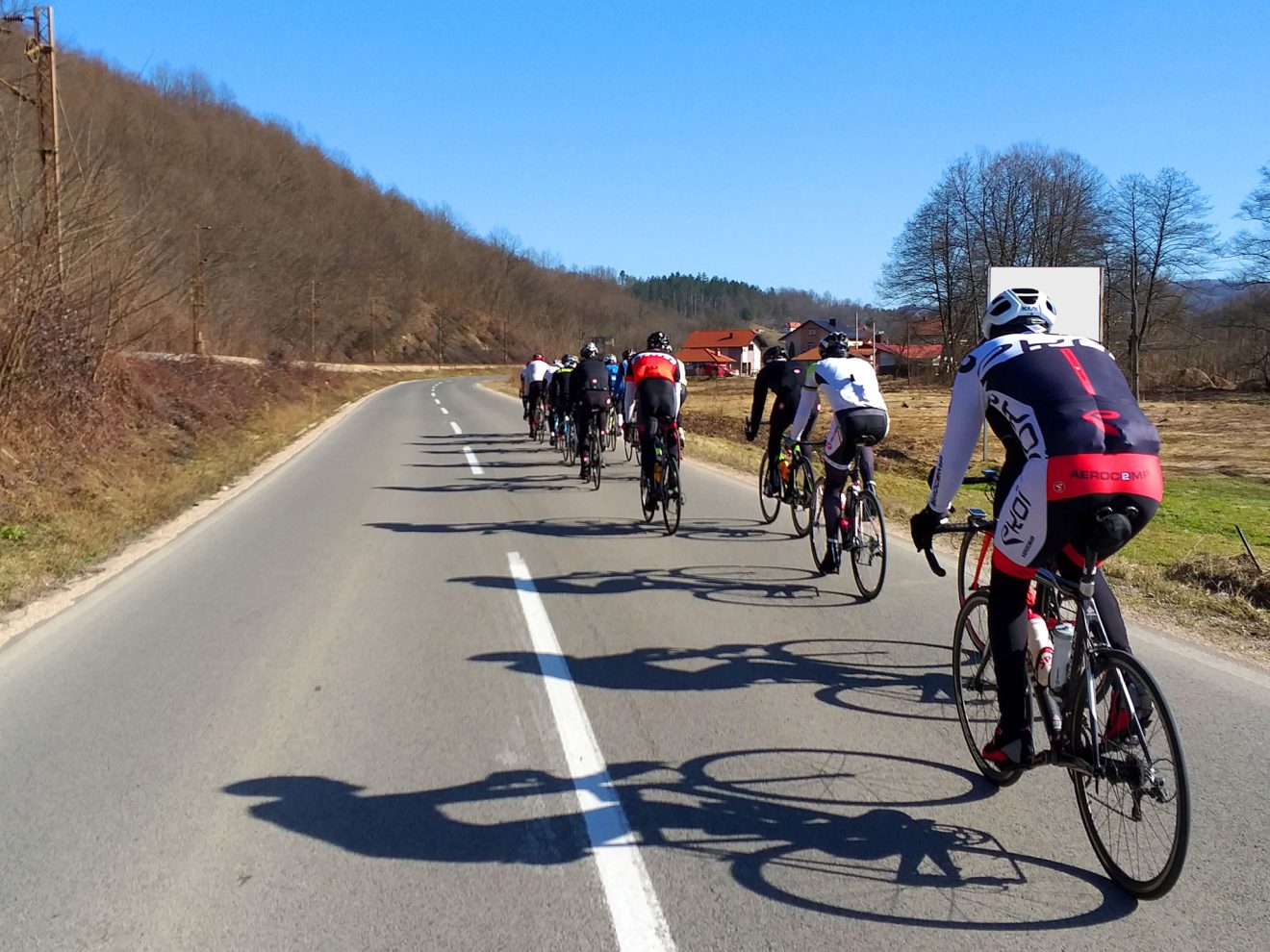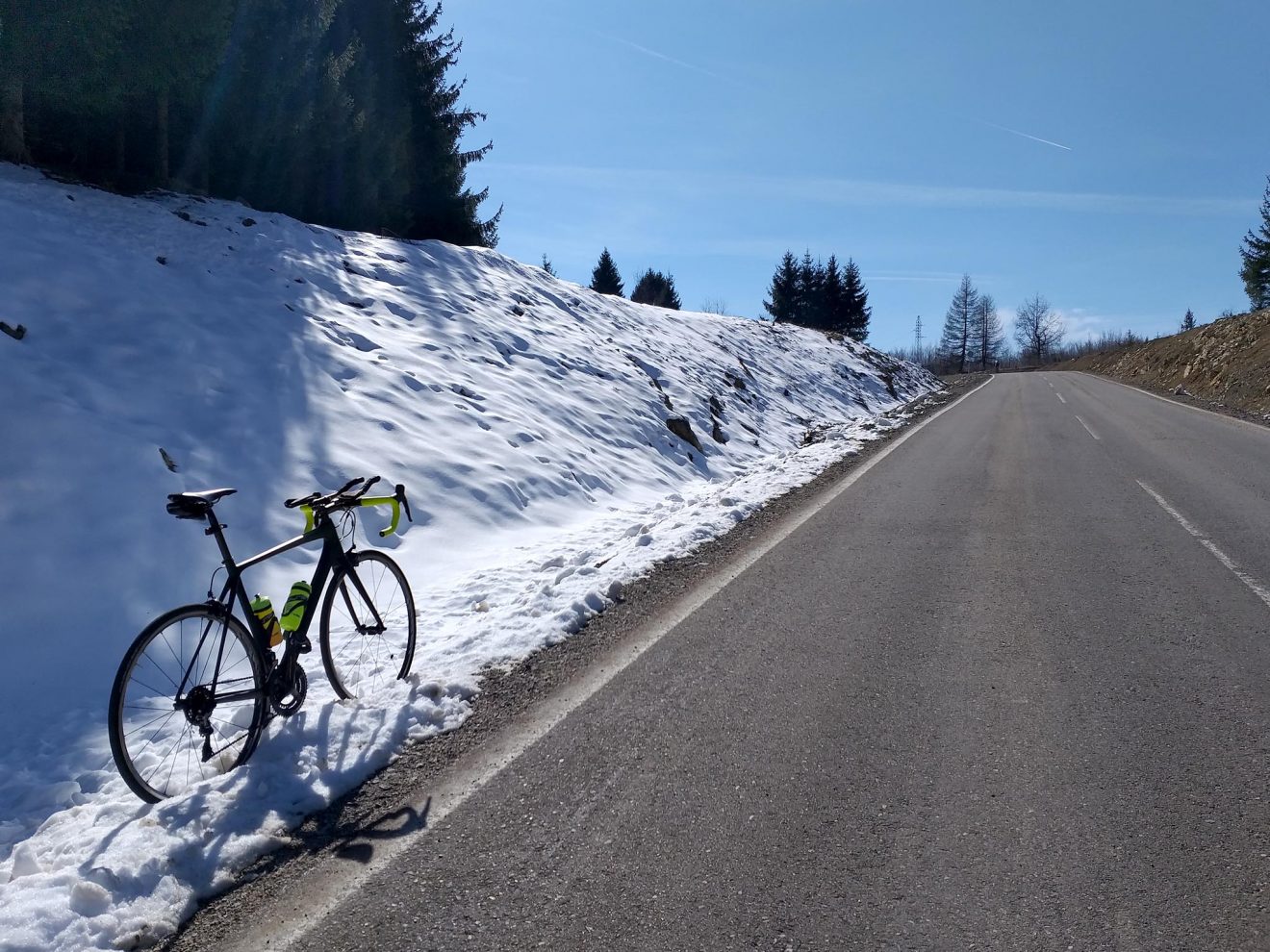Rome wasn’t built in a day, but they were laying bricks every hour.
– John Heywood
 As a direct continuation of the story of winter preparations for cyclists, it is time to switch over to base preparations. If we continue using the analogy with building a house – winter preparations were the foundation of the house, e.g. foundation of a good shape while base preparations are the ground floor and the first floor of the same house with three floors and a roof. Or – if you prefer an automotive analogy instead – during the winter we were gathering quality components and assembling an engine while in the base period we are running it in and preparing it for high performance usage during the season.
As a direct continuation of the story of winter preparations for cyclists, it is time to switch over to base preparations. If we continue using the analogy with building a house – winter preparations were the foundation of the house, e.g. foundation of a good shape while base preparations are the ground floor and the first floor of the same house with three floors and a roof. Or – if you prefer an automotive analogy instead – during the winter we were gathering quality components and assembling an engine while in the base period we are running it in and preparing it for high performance usage during the season.
What should I avoid doing at all costs?
I originally wrote this passage at the end of the article, but I moved it to the beginning, because it is extremely important! Driven by enthusiasm and a desire for good form and results during the season, cyclists quite often start intensive training very early, which also brings them in top shape early in the season while there is no human body that can be in such state for nine months. So, this is an ideal recipe for ruining your season – unless your main goal are spring classics in Belgium and the Netherlands or you are doing cyclocross instead of classic road cycling. A form is something that is diligently built and timed so that it can be used to its full potential when it is most needed.

What should I do then?
 Let’s remind ourselves – during the winter preparations, emphasis was on strength exercises and alternative aerobic activities, with the proviso that in the second part of the winter preparations it was possible to switch to very light rides on a turbo trainer or out on the road, depending on from weather conditions. If you started winter preparations in mid-November, then base preparations and a definite return to the road should occur sometime around mid-February. Since the weather conditions have become extremely disturbed and unpredictable, spring can de facto already occur in this period but a spell of very cold weather with rain or snow can also appear with a delay. This again brings us back to the necessity of owning (and using) a turbo trainer, so that the training process would not depend on force majeure and be interrupted at random. In any case, what characterizes this period is that we increase the volume (but not intensity by much!) of cycling and reduce the amount of strength training, with the proviso that we should still go to the gym and keep doing core exercises, but instead of two or three times per week, we will now practice it once or twice.
Let’s remind ourselves – during the winter preparations, emphasis was on strength exercises and alternative aerobic activities, with the proviso that in the second part of the winter preparations it was possible to switch to very light rides on a turbo trainer or out on the road, depending on from weather conditions. If you started winter preparations in mid-November, then base preparations and a definite return to the road should occur sometime around mid-February. Since the weather conditions have become extremely disturbed and unpredictable, spring can de facto already occur in this period but a spell of very cold weather with rain or snow can also appear with a delay. This again brings us back to the necessity of owning (and using) a turbo trainer, so that the training process would not depend on force majeure and be interrupted at random. In any case, what characterizes this period is that we increase the volume (but not intensity by much!) of cycling and reduce the amount of strength training, with the proviso that we should still go to the gym and keep doing core exercises, but instead of two or three times per week, we will now practice it once or twice.
Small ring
Back in the day, the basic rule was to ride the first five hundred kilometers on a small chainring. Gear ratios on road bikes have changed a lot over the last few decades (in that they have become much easier), so this premise is a bit outdated, but the same point still applies and that is that these initial ten rides should be easy, practically recreation without forcing the tempo and with an emphasis on practicing a steady position on the bike and smooth pedaling. So, regardless of the fact that the climbs are technically ridden on a small chainring – avoid them during this period :). When the muscles, ligaments, heart and even the buttocks get used to the bike – then we can start with more serious riding. If you have already done these easy rides in the winter – you can immediately progress to typical base rides instead.
Alright, what’s next?
We will define the rides of the base period as rides of moderate intensity, e.g. “endurance” and “tempo” rides, without excessive forcing, “pushing”, “entering the red zone” etc. If you’re using a heart rate monitor – these rides will be in the second and third zones (in a system of five HR zones), with short excursions to the lower fourth zone, through a slight increase in rhythm or ideally by crossing smaller hills. If you’re using a power meter, the same rule applies to zones (in a seven-zone system). If you do not have any of the above, then what you can use as a guide is the fact that in the second zone you can ride and talk to a colleague at the same time and you have the feeling that you could be riding like that for hours, in the third zone you have to chop sentences as not to run out of breath, but riding like that still doesn’t pose a problem, while in the fourth zone you already have a need to breathe much more intensely and it is difficult to have a meaningful conversation (nor should you have one) and you will probably be running out of strength in your legs as the minutes go by.

OK, understood! But how much should I be riding?
As for the volume, i.e. the amount of riding on a weekly basis – it depends on your affinities, as well as what activities you are specifically preparing for, but let’s say that, for starters, 10 hours or 250-270 km spread over four rides a week sounds like a great plan in any case. A typical recreational rider will certainly ride less than that at this time of year while a competitor will ride more, with the main thing being consistency and continuity, i.e. it is far better to ride three times a week for 1-2 hours, compared to only one ride of 6 hours. Also, if you can do two 2-hour rides during the working week and two 3-hour rides on weekends, then for the maximum effect make those shorter rides more intense than the longer ones, adhering to the previously mentioned zones rule. You can ride alone, with a buddy or within a group of riders – it doesn’t really matter much, just try to avoid the riders that like to “race” on social rides. To all this we add one or two strength exercise sessions and we have a brilliantly defined base period! As time goes on, the volume of rides should increase, but this does not necessarily mean an equal increase in time spent on the bike, because your rides will generally become faster (in terms of average speed or distance traveled). Also, over time, you should start adding longer climbs and – all in all – this period should last at least two months (in our example that would be until mid-April), after which technical training and high-intensity training will begin.
Of course, this is a very generalized definition of the base period, because it depends on a number of factors, but if you do not have a better plan – then stick to this one.

Summa summarum
So, what the base period does is that it enables us to gain endurance, develop efficient pedaling, build our aerobic system, slightly increase the average riding speed and create a springboard for high-intensity training, which will get us in shape and allow us to achieve our goals.
In the following articles, we will touch on a few more topics related to the base period, so try not to miss them and subscribe to the mailing list.
